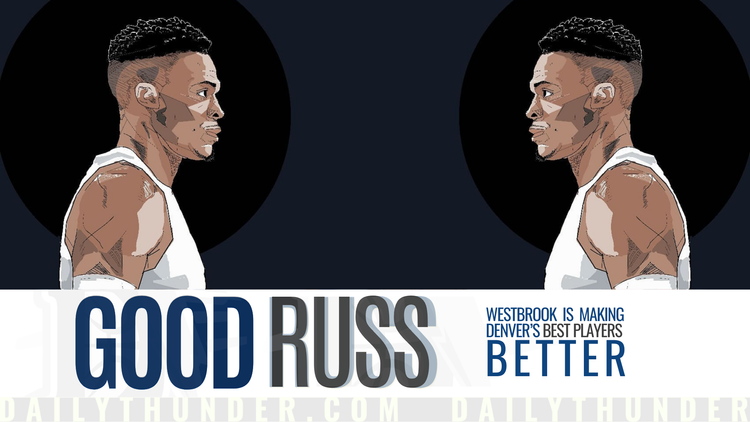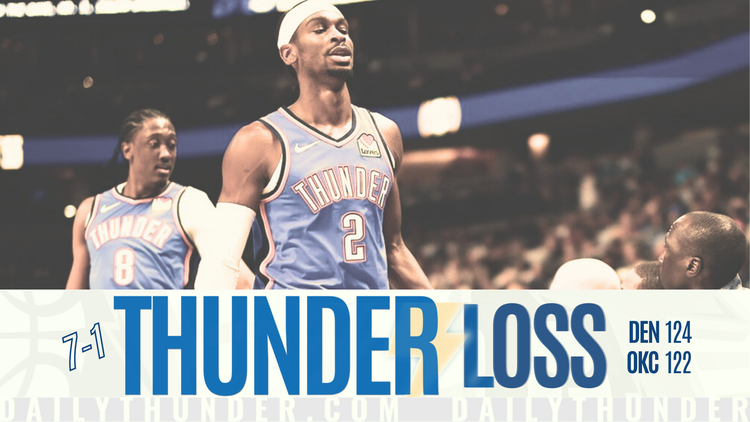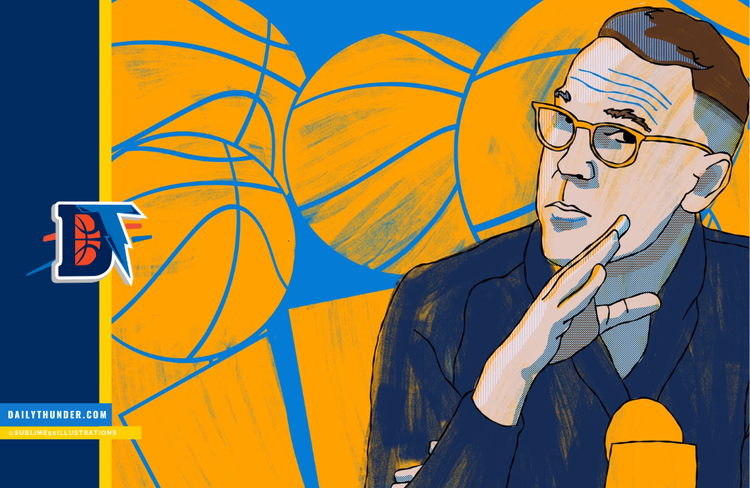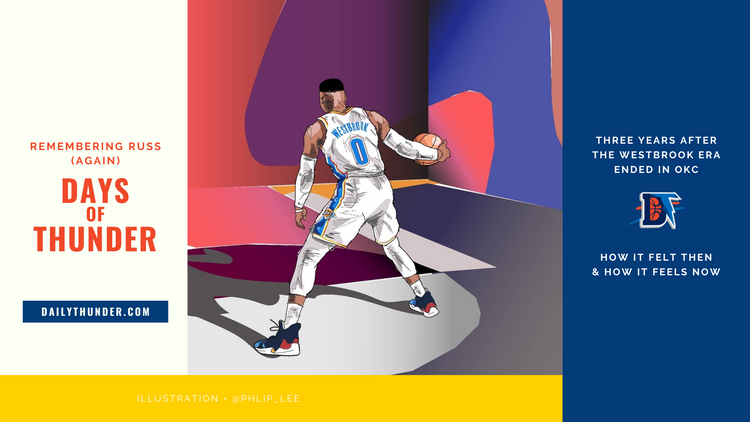Second Annual Oklahoma City Thunder Trade Value Extravaganza


A little more than a year ago, I put together the first ever Oklahoma City Thunder Trade Value Extravaganza. It was in part a tip of the cap to Bill Simmons’s always entertaining (if not a little misguided) annual column rating the trade value of many NBA players.
With this week being a light week (as the Thunder played just a single game, a win over the New York Knicks), I decided what better way to celebrate the imminent trade deadline (February 23, 2017 at 2:00 p.m. CT) than by unleashing the second edition of the Oklahoma City Thunder Trade Value Extravaganza.
I’ll apply the same ground rules as last year. “Trade value,” for purposes of this column, means, “who would be the most attractive trade bait?” This takes into account several factors such as talent, potential, salary, contract, and anything else my esteemed opinion deems valuable. Moreover, the intent is not prognosticate any actual trade scenarios. Basically, this is one man’s rambling thoughts on subjective player “value” and probably has little basis in reality.
And now, without further ado, the Second Annual Oklahoma City Thunder Trade Value Extravaganza.
15. Nick Collison (last year: 14). Collison, age 37, is in the final year of a 2-year, $7.5 million contract. “Mr. Thunder,” as he’s affectionately known, has received only sporadic minutes. While he has been mum on a potential retirement, it’s a near certainty Collison retires as a member of the Thunder. The only way I see Collison getting traded is if Sam Presti receives a wildly amazing trade (think Jimmy Butler for spare parts and an old battery) where the only holdup is a request to include Collison. Even then, Presti might pause.
14. Semaj Christon (last year: NR). Forced into the rotation at the beginning of the season due to Cameron Payne’s foot injury, Christon showed little signs of being a competent NBA backup. Expected to be with the Oklahoma City Blue of the NBA D-League (to be the G-League, fo sho), Presti decided to waive Ronnie Price and eat a big chunk of Price’s salary, putting more faith in Christon as a backup than Price. Unfortunately, Christon has been mostly a black hole in his minutes, neither being able to score effectively nor setup teammates effectively. To his credit, though, Christon is a marginal defender who is on an extremely cheap contract, with two non-guaranteed years remaining at least than $1 million per year. As a result, Christon would be filler, but his contract is so small, that it’s hard to imagine a trade scenario where his contract makes a difference.
13. Josh Huestis (last year 15). It’s probably a surprise to find Josh Huestis, far and away the NBA leader in Player Efficiency Rating (PER), ranked third from the bottom in trade value. It’s probably really a surprise when you see Huestsis’s per 36 minutes averages are 36 points, 21 rebounds, 5 assists, and 5 blocks on 75% shooting from the field and 50% from three. But I guess since Huestis has played just 7 total minutes this year, those numbers may be a wee bit inflated, and really, Huestsis is a long-term project that the team hopes pans out but is otherwise a relatively cheap salary. Same as last year, Huestis is trade filler.
12. Kyle Singler (last year: 10). Singler is yet another player on a team-friendly contract, with two guaranteed years remaining for less than $5 million annually (and a team option for the 2019-20 at $5.3 million). The problem with Singler, as with so many other players on the roster, is that his talent provides little trade value. Singler is basically Milton from Office Space, if Milton was getting paid $5 million a year. I mean, Milton was doing something, sure, but not enough to add value. All that being said, Singler is great trade filler. His contract is big enough that he could be moved to make room for a significant piece, that is, if someone doesn’t mind having Milton on their team for at least two more years.
11. Anthony Morrow (last year: 9). Morrow, one of the NBA’s best sharpshooters, is mired in a career-worst slump. He’s hitting less than 30% of his three point attempts, the worst marks of his career by a good margin, despite getting more playing time than last year. However, Morrow slumped for a good chunk of last season, before turning it around. Morrow also shot 36% from three in last year’s playoff run. As a result, Morrow would be a great upgrade for a contending team in need of additional shooting (say Toronto or Boston). Think late first round pick or a couple of second round picks.
10. Joffrey Lauvergne (last year: NR). Honestly, I don’t know what to make of Lauvergne. On the one hand, he’s shown great range, knocking down 34% of his three-point attempts. On the other hand, he ranks 69 out of 71 in defensive real plus minus. Fortunately, since Sam Presti traded for Lauvergne just last August, his value is pretty well known: two protected second-round picks. A restricted free agent this summer, Lauvergne could be an enticing option to a team void of front court players, but I doubt any GM will be clamoring add him to their roster via trade.
9. Jerami Grant (last year: NR). Grant exemplifies everything Presti seems to desire in a young talent–raw talent, freak athleticism, and poor shooting. Grant is an intriguing player. He has the ability to seemingly come from nowhere to swat shots, and, boy, can he get up. But he’s raw, often lost on both sides of the court, and, despite shooting a career-high 39% from three, is not a shooter by any means. He’s a luxury, as he can defend multiple positions, but he lacks enough refined skill to make him truly valuable. That being said, Presti sent a protected first-round pick and a proven vet in Ersan Ilyasova to acquire Grant, so he must be pretty valuable.
8. Enes Kanter (last year: 6). If not for Kanter’s disappointing injury, a broken arm suffered at the hands of a rogue chair, Kanter would be much higher on this list. Prior to the injury, Kanter was in the midst of a career year, anchoring the Thunder’s bench unit and finally showing that he could one day be something not awful defensively. Kanter ranks 14th in the league in PER, 13th among centers in offensive plus minus, and, as a major breath of fresh air, a full point better in defensive real plus minus versus last year’s abysmal mark. But alas, he’s out until sometime mid-March, and it’s unlikely he’ll be part of any trade discussions.
7. Alex Abrines (last year: NR). Abrines earned an NBA contract primarily for his shooting. With a three-point percentage of 37.5%, Abrines is basically doing what he was brought over from Spain to do. However, he’s ranked this high for one reason above all else, his absolute steal of a contract. Last summer, Abrines signed a three year, $17.2 million contract which actually decreases year over year. You can bet that teams would love to add Abrines, his three-point shooting, and his incredibly team-friendly contract. You can also bet that the Thunder won’t be likely to go give him up.
6. Andre Roberson (last year: 11). Virtually everything I wrote about Roberson last season remains true this year as well. He’s an elite defensive talent that absolutely makes an impact on the defensive end. While he doesn’t have flashy stats like blocks or steals to garner much defensive player of the year credit, Roberson is undoubtedly one of the premier defensive players in the league. Unfortunately, Roberson makes virtually no impact on the offensive end and is one of the league’s worst three-point shooters. Among players who have taken at least 100 threes this season, Roberson ranks dead last with a conversion rate of just 24%, the lowest mark since his rookie year. To compound the issue, Roberson is in the last year of his rookie deal and did not get an extension. If some defensively-starved team throws a $10+ million offer sheet at Roberson, do you match? Not only is this the question Presti must struggle with, but it certainly stunts any trade value Roberson may have. Notwithstanding these issues, the Thunder are light on valuable assets, so Roberson’s elevated rank is strictly a product of less talent on the roster. At best, Roberson is worth a (lottery) protected first-round pick.
5. Cameron Payne (last year: 5). On a contending team last year, Payne was a nice change of pace backup to Russell Westbrook. He could hit threes well enough, create well enough, and not turn the ball over well enough. It certainly created promise that Payne could develop into a contributing backup point guard. This season, though, after missing the first 9 weeks of the season due to injury, Payne has been inconsistent to put it mildly. Forced into a bigger role due to the ineptitude of Semaj Christon, Payne has struggled leading the second unit without Kanter. Payne is a young lottery pick, though, and has two more years under team control. He was good enough to apparently be a part of a rumored Rudy Gay trade, so I’m going to venture that Payne is the most likely to be traded.
4. Domantas Sabonis (last year: NR). Early this year, Sabonis lit up every Thunder fan’s eyes with his excellent three-point shooting. After a hot start, Sabonis has hit the metaphorical rookie wall head on. He’s struggled shooting, is turnover prone, and generally looks uncomfortable far too often. But occasionally he flashes the skills that made him the number 11 pick in last year’s draft–namely excellent offensive feel and great touch around the basket. It’s clear that Sabonis has so-called “basketball IQ,” but adapting to the NBA game has proven difficult. In fairness, Sabonis is a rookie, and a rookie who clearly has upside. Suffice to say, I can’t imagine the Thunder part with Sabonis for anything less than an instant-impact veteran.
3. Victor Oladipo (last year: NR). Oladipo was the prize piece of the the Serge Ibaka trade last summer. Although Presti probably envisioned Oladipo coming off the bench and running the second unit, the departure of Kevin Durant necessitated Oladipo in the starting lineup. In an enhanced role (not too dissimilar to his role with Orlando), Oladipo has mostly duplicated his performance from last year. He’s fairly efficient, a solid defender, and extremely athletic. He’s a valuable young asset that’s being asked to shoulder a bigger burden than maybe he should. As a third scorer on a contending team, Oladipo would probably thrive, but he’s talented enough that he could blossom into a true two-way threat. Also, with the 4 year, $84 million extension signed last October, Oladipo is locked up for a reasonable price. (Note that the extension complicates any potential trade, as the average value of the remaining years on his current contract and his new contract will be used to determine the salary cap mechanics of any trade.) If the Thunder were to make a major move, Oladipo would certainly be on the wishlist of most trade partners, but the asking price would be steep.
2. Steven Adams (last year: 3). Adams, like Oladipo, has been forced into an elevated role this season, and, for the most part, has excelled. Adams is scoring (12.2 per game) and rebounding (7.9 per game) at a career-best pace, he’s a defensive stalwart, and, most dramatically, he’s become a competent free throw shooter. I consider Adams the Thunder’s unquestioned second-best player (and undoubtedly the team’s second most popular player). The Thunder also signed Adams to a massive 4 year, $100 million contract extension last fall, exhibiting a significant commitment to Adams as their present and future starting center. I am pretty confident in saying that the Thunder will not be trading Adams.
1. Russell Westbrook (last year: 1). No. Just no.




